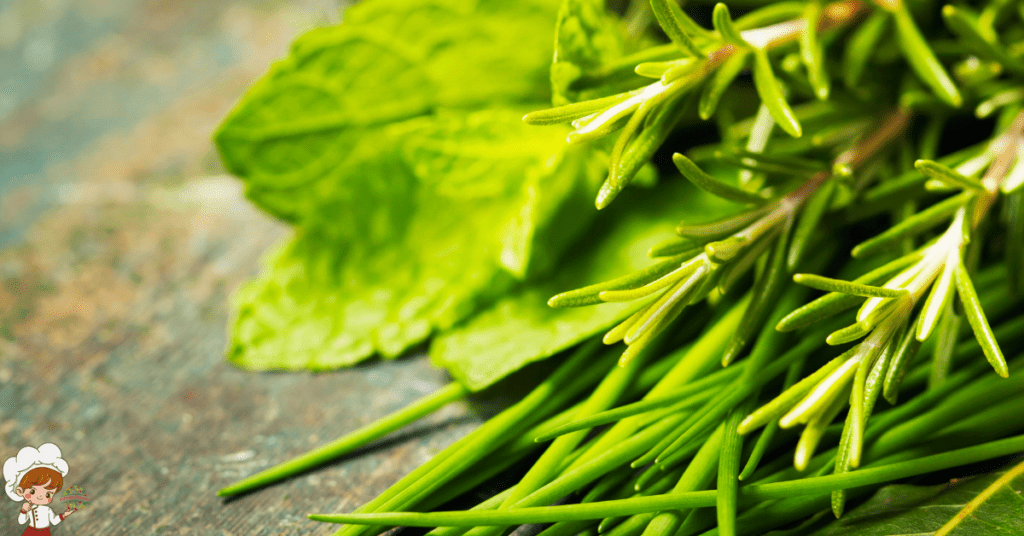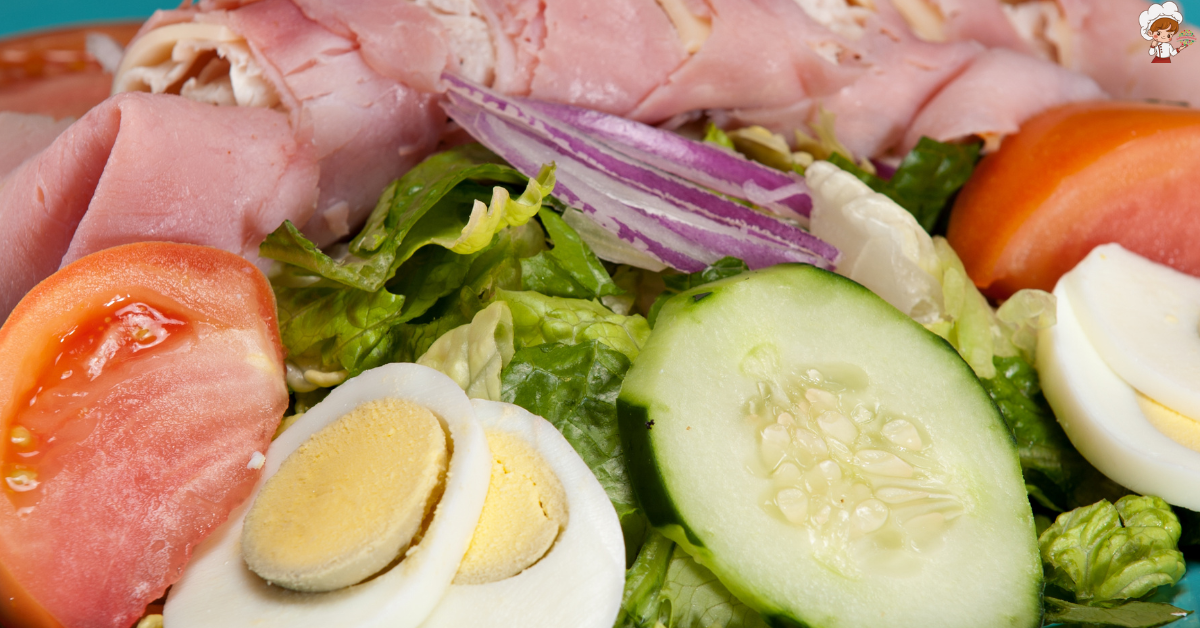Popular Italian Herbs And Spices Used In Cooking

Are you ready to embark on a culinary journey through the flavors of Italy? Then get ready to explore the world of Italian Herbs And Spices Used In Cooking! Just like a symphony conductor, these ingredients bring harmony and depth to your dishes, transforming them into culinary masterpieces. From the majestic basil, known as the King of Italian Herbs, to the zesty oregano that adds a burst of flavor, each herb has its own unique personality.
The aromatic rosemary, the versatile thyme, the earthy sage, and the essential parsley all play a vital role in creating the authentic taste of Italy. And let’s not forget about the flavorful staple, garlic, that adds a delicious punch to every Italian dish. So, grab your apron and let these Italian herbs and spices guide you on a flavorful adventure!
Basil: The King of Italian Herbs
When it comes to Italian herbs, basil reigns as the undisputed king. With its distinct aroma and versatile flavor, basil is a staple in Italian cuisine. Not only does it enhance the taste of various dishes, but it also offers numerous health benefits.
Basil is rich in antioxidants, which help protect the body against cellular damage caused by free radicals. These antioxidants, such as beta-carotene and vitamin C, contribute to a stronger immune system and reduce the risk of chronic diseases. Additionally, basil contains essential oils like eugenol, which possess anti-inflammatory properties and can alleviate symptoms of conditions like arthritis.
There are different varieties of basil, each with its own unique taste and appearance. The most common type is sweet basil, characterized by its vibrant green leaves and slightly peppery flavor. This variety is commonly used in pesto, salads, and tomato-based dishes. Another popular type is Thai basil, which has a stronger, spicier taste and is often used in Thai and Vietnamese cuisine. Other varieties include lemon basil, with a citrusy aroma, and purple basil, which adds a pop of color to dishes.
Oregano: Adding Zest to Italian Dishes
When it comes to Italian cooking, oregano is a key ingredient that adds a traditional and authentic flavor to your dishes. Its strong, aromatic taste and earthy undertones make it a versatile herb that pairs well with a variety of ingredients. Whether you’re making pizza, pasta sauce, or even roasted vegetables, oregano is a must-have herb that will elevate your Italian dishes to the next level. And if you ever run out of oregano, there are a few substitutes like marjoram or thyme that you can use to still achieve that distinctive Italian flavor.
Oregano: Traditional Italian Flavor
To enhance the taste of your Italian dishes, start by adding just a pinch of oregano. This herb, with its distinct aroma and flavor, is a staple in traditional Italian cuisine. Here are four reasons why oregano is a must-have in your kitchen:
- Oregano health benefits: This herb is packed with antioxidants, vitamins, and minerals that can improve digestion, boost the immune system, and reduce inflammation. It is also believed to have antibacterial properties.
- Oregano in Mediterranean cuisine: Oregano plays a crucial role in Mediterranean cooking, adding depth and complexity to dishes like pizza, pasta, and sauces. It pairs perfectly with tomatoes, garlic, and olive oil, enhancing the flavors of these ingredients.
- Versatility: Oregano can be used fresh or dried, and it works well in both marinades and rubs. Its strong flavor can stand up to bold ingredients like lamb, beef, and fish.
- Easy to grow: Oregano is a hardy herb that can be easily grown in your garden or even in a pot on your windowsill. Having a fresh supply on hand can elevate your Italian cooking to new heights.
Versatility of Oregano
To fully appreciate the versatility of oregano, it’s essential to explore how this herb adds zest to Italian dishes. Oregano is a staple in Mediterranean cuisine, known for its robust and aromatic flavor. It is commonly used in Italian dishes like pizza, pasta sauce, and marinades. Oregano not only enhances the taste of these dishes but also provides several health benefits.
Oregano oil, derived from the leaves of the herb, is known for its antibacterial and antioxidant properties. It can be used to treat various ailments, including respiratory infections and digestive issues. Oregano is also rich in vitamins and minerals, making it a nutritious addition to your meals. Whether you use it as a dried herb or in oil form, oregano is a versatile ingredient that adds a burst of flavor to Italian cuisine while promoting overall well-being.
Oregano Substitutes in Recipes
To add zest to your Italian dishes without using oregano, consider using oregano substitutes that offer a similar aromatic and flavorful touch. Here are some alternatives that can provide the same flavor profiles:
- Marjoram: This herb is closely related to oregano and has a milder taste. It adds a subtle sweetness to dishes and works well in soups, stews, and roasted meats.
- Thyme: Known for its earthy and slightly minty flavor, thyme can be a great substitute for oregano. It pairs well with tomatoes, garlic, and olive oil, making it a versatile choice for Italian recipes.
- Basil: This herb is a staple in Italian cooking and can bring a fresh and slightly sweet flavor to your dishes. It works well in pasta sauces, pizza, and salads.
- Sage: Although not commonly used in Italian cuisine, sage can provide a unique and savory taste to your dishes. Its robust flavor pairs well with meats and roasted vegetables.
Rosemary: Aromatic Herb With a Piney Flavor
If you’re looking for an aromatic herb with a piney flavor, try using rosemary in your Italian cooking. Rosemary is a versatile herb that is commonly used in Mediterranean cuisine. It adds a unique and distinctive flavor to a variety of dishes, making it a staple in Italian cooking.
Rosemary has been used in Mediterranean cuisine for centuries. Its strong, pine-like aroma and earthy flavor make it a popular choice for seasoning meats, particularly lamb and poultry. It can also be used to enhance the flavors of roasted vegetables, potatoes, and even bread. Rosemary pairs well with other herbs such as thyme, oregano, and sage, creating a flavorful blend that elevates the taste of any dish.
There are different varieties of rosemary, each with its own unique characteristics. The most common variety is Rosmarinus officinalis, which has needle-like leaves and a strong fragrance. Other varieties include Tuscan Blue, with its dark blue flowers and intense flavor, and Prostratus, a trailing variety that is often used as ground cover. Each variety has its own distinct taste and scent, allowing you to experiment and find the one that best suits your culinary preferences.
In addition to its culinary uses, rosemary also has various health benefits. It is rich in antioxidants and has anti-inflammatory properties. It has been used in traditional medicine to improve digestion, boost memory, and relieve muscle pain. Incorporating rosemary into your diet can not only add flavor to your dishes but also provide potential health benefits.
Thyme: Versatile Herb for Italian Cooking
Thyme is an essential herb in Italian cuisine, adding a unique and versatile flavor to a variety of dishes. From pasta sauces to roasted meats, thyme enhances the overall taste and aroma of Italian recipes. Its earthy and slightly minty notes make it a popular choice for chefs and home cooks alike when cooking traditional Italian dishes.
Thyme in Italian Cuisine
Using thyme in Italian cuisine adds a versatile and flavorful element to your dishes. Here are four reasons why you should incorporate thyme into your cooking:
- Cooking with thyme enhances the taste of your dishes: Thyme has a unique earthy flavor that complements a wide range of Italian recipes, from pasta sauces to roasted meats.
- Thyme is packed with health benefits: This herb is rich in vitamins and minerals, including vitamin C, vitamin A, and iron. It also contains antioxidants that can boost your immune system and promote overall well-being.
- Thyme adds a beautiful aroma to your meals: The fragrant scent of thyme can transform a simple dish into a culinary masterpiece, creating a delightful sensory experience.
- Thyme is easy to grow and use: Whether you choose to grow thyme in your garden or buy it fresh from the store, this herb is incredibly versatile and can be used in various Italian dishes.
Cooking With Thyme
Enhance your Italian dishes with the versatile herb, thyme. Cooking with thyme not only adds a burst of flavor to your meals but also provides several health benefits. Thyme is rich in vitamins A and C, as well as various minerals such as iron and manganese. It is known for its antioxidant properties, which help protect the body against free radicals and reduce inflammation. Thyme also contains compounds like thymol, which have antimicrobial properties and can aid in fighting infections.
When cooking with thyme, you can use it in a variety of dishes, including pasta sauces, soups, stews, and roasted vegetables. Its earthy and slightly minty flavor adds depth to the flavors of Italian cuisine. So, next time you’re in the kitchen, don’t forget to sprinkle some thyme to elevate your Italian dishes to the next level.
Sage: Earthy Herb for Savory Italian Delights
Add a sprinkle of this earthy herb to your Italian dishes to elevate their savory flavors. Sage, with its distinct aroma and flavor, is a staple in Italian cuisine. Not only does it enhance the taste of your dishes, but it also offers a range of health benefits. Here’s why you should consider incorporating sage into your Italian cooking:
- Rich in Antioxidants: Sage contains powerful antioxidants that help protect your body against damage from free radicals. These antioxidants can promote overall health and reduce the risk of chronic diseases.
- Boosts Cognitive Function: Sage has been used in Italian medicine for centuries to improve memory and cognitive function. It contains compounds that may enhance brain function and protect against age-related cognitive decline.
- Anti-Inflammatory Properties: The active compounds in sage have anti-inflammatory effects, which can help reduce inflammation in the body. This is particularly beneficial for those with inflammatory conditions such as arthritis.
- Digestive Aid: Sage has been traditionally used in Italian medicine as a digestive aid. It can help stimulate the production of digestive enzymes, promote healthy digestion, and alleviate gastrointestinal discomfort.
In addition to its health benefits, sage adds a unique earthy flavor to Italian dishes. Whether you’re making a classic risotto, a hearty pasta sauce, or a flavorful roasted meat dish, adding sage will take your culinary creations to the next level. So, the next time you’re cooking Italian, don’t forget to reach for this versatile herb and enjoy its delightful taste and health benefits.
Parsley: The Essential Herb in Italian Cuisine
To continue elevating the savory flavors of your Italian dishes, let’s delve into the essential herb in Italian cuisine: parsley. Parsley is a versatile herb that not only adds a fresh burst of flavor to your dishes but also provides numerous health benefits. In Italian cuisine, parsley is used in a variety of dishes, from pasta sauces and soups to salads and meat dishes.
One of the main benefits of parsley in Italian dishes is its ability to enhance the taste of other ingredients. Its bright, slightly bitter flavor complements the richness of tomatoes, garlic, and olive oil, which are common ingredients in Italian cooking. By adding parsley to your dishes, you can elevate the overall flavor profile and make your dishes more appetizing.
In Italian cuisine, two main varieties of parsley are commonly used: flat-leaf parsley and curly parsley. Flat-leaf parsley, also known as Italian parsley, has a stronger flavor and is often preferred in cooked dishes. Its robust taste pairs well with hearty dishes like stews and braises. On the other hand, curly parsley, with its milder flavor and decorative appearance, is often used as a garnish or in salads.
Apart from its flavor-enhancing properties, parsley is also packed with nutrients. It is a rich source of vitamins A, C, and K, as well as minerals like iron and potassium. Additionally, parsley contains antioxidants that can help reduce inflammation and promote overall well-being.
Garlic: The Flavorful Staple of Italian Cooking
Garlic, a flavorful staple in Italian cooking, adds depth and richness to a variety of dishes. Its pungent aroma and distinct taste make it a beloved ingredient in Mediterranean cuisine. Here are four reasons why garlic is not only delicious but also beneficial for your health:
- Boosts Immune System: Garlic is known for its immune-boosting properties. It contains compounds that can enhance the function of immune cells, helping your body fight off infections and diseases.
- Lowers Blood Pressure: Regular consumption of garlic has been linked to a reduction in blood pressure levels. It contains a compound called allicin, which helps relax blood vessels and improve blood flow, ultimately leading to lower blood pressure.
- Reduces Cholesterol Levels: Garlic has been shown to lower LDL cholesterol, also known as the “bad” cholesterol, while increasing HDL cholesterol, the “good” cholesterol. This can help reduce the risk of heart disease and improve overall heart health.
- Antioxidant Properties: Garlic is packed with antioxidants that can help protect your cells from damage caused by free radicals. These antioxidants may also have anti-inflammatory effects, potentially reducing the risk of chronic diseases like cancer and arthritis.
In addition to its health benefits, garlic plays a crucial role in Italian cuisine. It is used in various dishes, from pasta sauces to soups and stews, adding a depth of flavor that is hard to replicate. Whether roasted, sautéed, or minced, garlic brings a unique and aromatic taste to Italian dishes, making them truly memorable.
Conclusion: Italian Herbs And Spices Used In Cooking
In conclusion, Italian cuisine is renowned for its rich flavors, and the herbs and spices used play a significant role in achieving this. Basil, oregano, rosemary, thyme, sage, parsley, and garlic are all essential ingredients that bring depth and complexity to Italian dishes. Whether it’s the fresh aroma of basil, the zesty kick of oregano, or the earthy notes of sage, these herbs and spices elevate the taste and create a truly authentic Italian experience. So, next time you cook Italian, don’t forget to incorporate these flavorful ingredients into your dishes.








